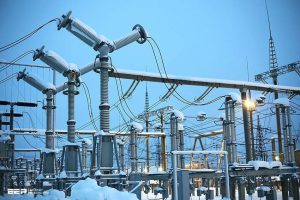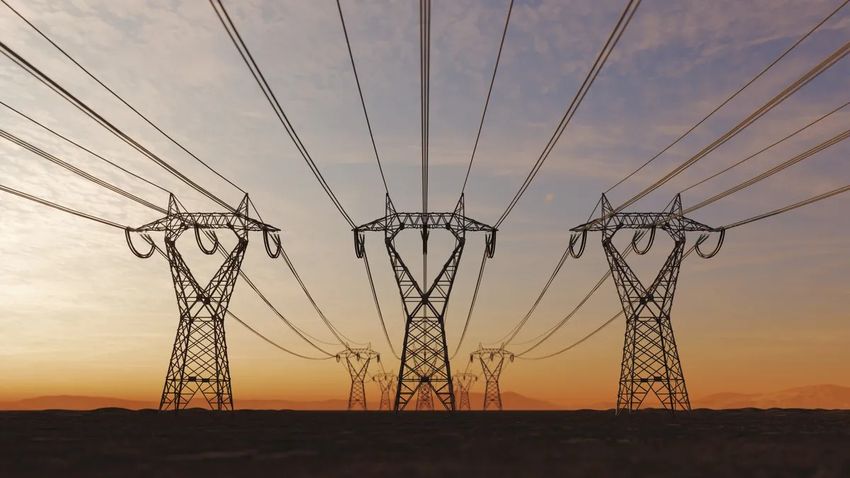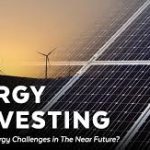Electricity is the lifeblood of modern civilization, but transmitting it over long distances comes with energy losses, inefficiencies, and infrastructure challenges. As global energy demand rises, making power transmission more efficient is crucial to ensuring a sustainable and cost-effective energy future. Let’s explore the problems with current power transmission systems and the best technologies and innovations that can improve efficiency.
1. Why Power Transmission Efficiency Matters

Power transmission involves moving electricity from power plants to homes, businesses, and industries. However, a significant amount of energy is lost due to resistance, heat, and outdated infrastructure. Here’s why efficiency is critical:
✅ Reduces energy waste – Less energy lost means lower costs and better sustainability.
✅ Lowers carbon footprint – Efficient transmission reduces the need for extra power generation.
✅ Improves reliability – Reducing power loss prevents blackouts and improves grid stability.
✅ Supports renewable energy – Efficient transmission helps integrate solar, wind, and hydro power sources into the grid.
2. Major Causes of Power Transmission Losses
🔴 Resistive Losses (Joule Heating) – Traditional copper and aluminum wires heat up due to electrical resistance, wasting energy.
🔴 Corona Discharge – High-voltage transmission lines lose power due to ionization of air around conductors.
🔴 Transformers Losses – Electrical energy is lost during step-up and step-down transformation.
🔴 Grid Congestion – Overloaded power lines lead to inefficiencies and forced shutdowns.
3. Ways to Make Power Transmission More Efficient
3.1. High-Voltage Direct Current (HVDC) Transmission
✅ Lower Energy Losses – Unlike AC, HVDC transmission suffers lower losses over long distances.
✅ Better Renewable Integration – HVDC efficiently transports energy from offshore wind farms and remote solar plants.
✅ Less Interference – Reduces power fluctuations and improves grid stability.
🔹 Example: China’s ±1100 kV HVDC line transmits power over 3,000 km with only 5% loss!
3.2. Superconducting Power Cables
🌀 What if we could transmit power with almost zero losses?
Superconductors, when cooled below their critical temperature, conduct electricity without resistance, making them ideal for ultra-efficient power transmission.
✅ Eliminates resistive losses
✅ Smaller, lightweight cables
✅ Ideal for high-density cities
🔹 Example: Germany’s superconducting grid projects are paving the way for lossless transmission!
3.3. Smart Grids & AI-Powered Optimization
🔍 Traditional grids suffer from inefficiencies due to static infrastructure. Smart grids use sensors, AI, and real-time monitoring to:
✅ Predict and prevent failures
✅ Optimize energy routing to reduce congestion
✅ Automatically balance supply and demand
🔹 Example: The US Smart Grid Initiative is upgrading traditional grids to be self-healing and energy-efficient!
3.4. Ultra-High Voltage (UHV) Transmission
⚡ Higher voltage = Lower current = Lower resistive losses!
Ultra-High Voltage (UHV) AC and DC transmission can deliver power over thousands of kilometers with minimal losses.
✅ Reduces transmission losses to below 6%
✅ Can carry gigawatts of power efficiently
✅ Enables better intercontinental power exchange
🔹 Example: China’s UHV projects have saved millions of tons of coal by reducing transmission losses!
3.5. Distributed Energy Storage Systems (DESS)
🔋 What if we stored energy closer to where it’s used?
Distributed storage systems reduce transmission losses by storing excess energy locally and supplying it when needed.
✅ Reduces peak demand on transmission lines
✅ Improves grid resilience against blackouts
✅ Supports renewable energy sources
🔹 Example: Tesla’s Powerwall and grid-scale batteries in Australia are helping reduce transmission strain!
4. The Future of Power Transmission
🚀 As technology advances, power transmission will become even more efficient. Emerging trends include:
🔹 Wireless Power Transmission (WPT) – Inspired by Nikola Tesla’s dream, research is exploring ways to send power through the air!
🔹 Graphene-based Conductors – Ultra-low resistance materials may replace copper wires in the future.
🔹 Space-based Solar Power (SBSP) – Beaming solar energy from satellites directly to Earth’s grids.
5. Conclusion: A Smarter, More Efficient Future
Efficient power transmission is key to reducing costs, lowering emissions, and supporting a greener planet. With HVDC, superconductors, AI-powered grids, and cutting-edge innovations, we can maximize energy efficiency and build a sustainable power network for the future!
💡 What’s next?
Governments, engineers, and researchers are pushing the boundaries to revolutionize energy transmission. As these technologies evolve, electricity will become cleaner, cheaper, and more accessible to all.
🌍 Let’s electrify the future—efficiently! 🔋⚡


